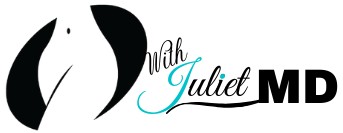Breasts are above the bellybutton. Gynecologists, however, are the primary consultants for breast problems. A good friend of mine was recently told that she needed a biopsy; this prompted me to write about a benign condition called fibrocystic breast disease. The word disease is quite misleading since fibrocystic changes occur in many normal breasts and is most commonly found in young women between the ages of 20 and 50. Also, take note of the word benign which means not malignant, not cancer and won’t directly lead to death. On exam, either by you or your doctor, there are areas where the breast feels thick and lumpy! Some of the lumps are rubbery while others may feel like tiny balloons filled with water. Basically the breasts respond to hormones by forming cysts or solid lumps (called fibro adenomas). Women who have fibrocystic breast changes may also have breast pain; this symptom is usually more intense at the time of menstruation. Don’t panic.
If you find an unusual lump in the breast, make an appointment for a breast exam. All breast lumps should be evaluated and the best way to differentiate between a cyst and an adenoma is by ultrasound. Depending on your age, your doctor may also prescribe a mammogram. If the radiologist is confident that the studies are consistent with fibrocystic changes, he/she may recommend a follow-up test in 6 months or 1 year to check for changes in the character of the breast. Sometimes the cysts/fibro adenomas may appear complex and some form of biopsy would then be recommended.
Small simple cysts in the breast do not necessarily need treatment. Large cysts (which tend to be painful) can be drained with a tiny needle in the office. Similarly small adenomas do not have to be removed. Most surgeons would probably elect to remove larger ones but keep in mind, fibro adenomas can pop up frequently throughout a woman’s lifetime. It’s probably best to avoid multiple surgeries for a benign condition. Something to remember, even though an adenoma in a twenty year old women is not cause for major concern, that women is at a higher risk of developing breast cancer when she gets older. Annual mammograms after the age of 40 are a must.
Women with fibrocystic breast changes can experience breast pain. There are a myriad of treatments for this problem. Some physicians may advise reducing caffeine intake or wearing a support bra and, birth control pills are often prescribed. Why birth control pills? Birth control pills prevent the natural wide swings in hormone levels which cause changes in the breast tissue and is thought to aggravate breast pain. For those patients who suffer with pain, acetaminophen (Tylenol) or Ibuprofen (Motrin, Advil) is usually enough. Evening Primrose is available over-the-counter. It is a nutritional supplement that has been shown to help some women with breast pain. There are a couple of other medications available, but they are rarely used and as such, I chose not to include them in this writing.
There you have it. Now spread the word!
P.S. Since I want you to be savvy, educated health care consumers, I want to point out that fibro adenomas in the breast are not related to fibroids that grow in the uterus. I’ll write about fibroids in my next feature.
